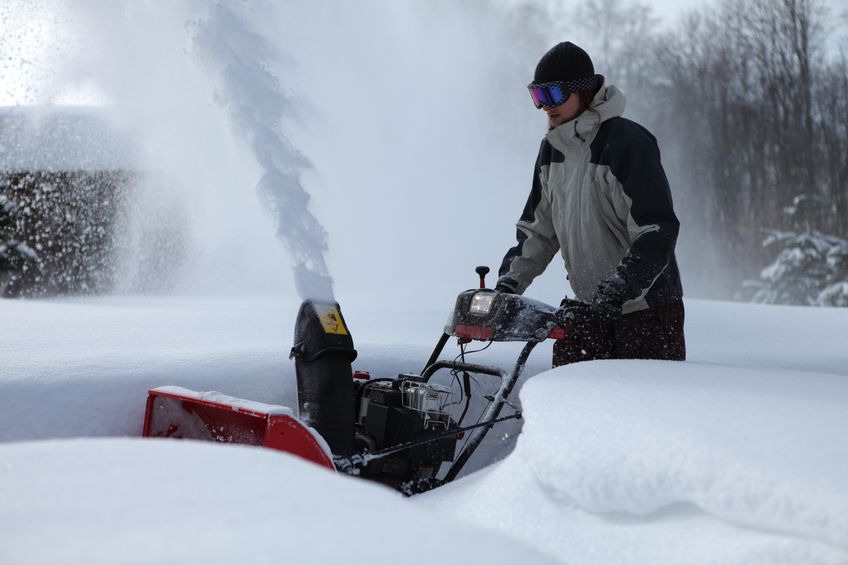If your region is prone to snowy winters, you probably have a snow blower tucked away in a garage corner just waiting for the first flurries. But before the flakes fall, pull out your snow equipment and take a look at it to be sure you’re prepared for a storm. You don’t want to be missing a critical component with two feet of snow on the ground.
Your gasoline
Drain old gasoline from the equipment into a container. You want fresh gasoline along with a stabilizer liquid. Because your blower use may be sporadic during the winter, the stabilizer preserves the gasoline for efficient use when the equipment is needed.
Oil change
Similar to your car’s engine, snow blowers require oil to lubricate moving parts. The old oil may be gummy after sitting for many months. Drain it and replace it with quality oil. Your owner’s manual typically lists preferable brands, so use those recommendations for the best results.
Take a look around
Snow equipment takes a beating while removing thick swaths of wet snow. As such, it is important to inspect the equipment’s visible screws and bolts and tighten any loose bolts you find. If you lose a bolt from the vibrations during snow removal, you may never find that part again. Or it can lodge itself in the machine itself, causing irreparable damage and instant breakdown.
Check the sparkplug
Gasoline engines use sparkplugs to ignite the fuel. Open the hood and inspect the sparkplugs when the machine is off. Using a gap tool, check that the plug has sufficient spacing for efficient ignition. You may notice residue on the plug, and over time, the plug wears down. Clear off the residue gently with sandpaper or replace the plug if it is too worn. You don’t want your blower to stall during a large snow removal process.
Belt health
Belts transfer power among the mechanized engine parts. Take a look at the belts and adjust their tension, if necessary. Your owner’s manual should have a detailed tension adjustment description based on your model’s design. Be aware, specific manufacturers often require specialized tools. Any torn or cracked belts should be replaced, and you should keep spare belts handy to reduce your downtime. If a belt snaps during operation, shut the machine off immediately or internal parts could be severely damaged.
Prepping your snow equipment before the winter weather arrives relieves stress once the snow begins to fall. Cold fingers and missing machine parts are a frustrating combination when you want to use the blower instantly without any maintenance. Stay safe and ride out the storm with an efficient machine that lasts for seasons to come.
Post Author: andyc.




